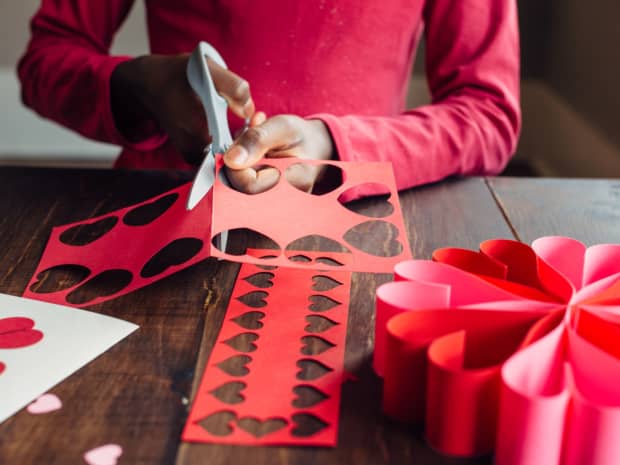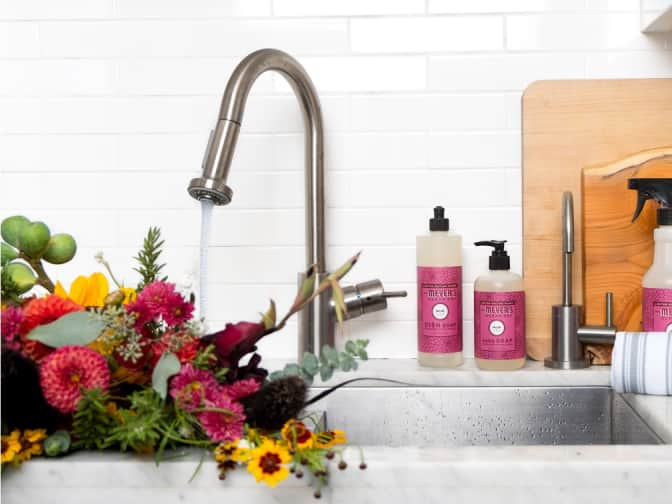
5 ways to make your bedroom more eco-friendly.
Make your bedroom an earth-friendly haven with our five easy and sustainable tips.
Read More


Last Updated: January 18, 2022
We’ve asked our resident Guru of Green, Director of Sustainability Danielle Jezienicki, to offer up some eco-friendly Valentine’s Day swaps so you can love your people and your planet this February.
Valentine's Day is the time to show some love to family and friends, but the impact on the environment is not quite as warm and fuzzy.
In the U.S. Valentine's Day revelers go through as many as 36 million heart-shaped boxes, 180 million greeting cards, and 58 million pounds of chocolate. The result is a lot of waste and unnecessary emissions.
We aren't here to bum you out by squashing your favorite Valentine’s Day traditions. Instead, we’ve asked our resident Guru of Green, Director of Sustainability Danielle Jezienicki, to offer up some eco-friendly Valentine’s Day swaps so you can love your people and your planet this February.
Let's do a quick rundown of a couple ways you can be more eco-friendly this Valentine's Day.
First up: flowers.

Flowers are lovely to look at, but the environmental impact of shipping all of those flowers isn't quite as pretty.
In the weeks leading up to Valentine's Day, as many as 30 cargo jets per day make the trip from Colombia to the U.S. carrying millions of fresh roses, the Washington Post reports. These flights emit about 360,000 metric tons of carbon dioxide.
There's also the fact that many bouquets include wasteful packaging materials, like plastic and styrofoam, that end up in the trash.
The good news? There are better ways to buy flowers.
If you decide to get a bouquet for Valentine's Day, Danielle Jezienicki says local, organic flowers are the best option, since they're grown without pesticides and usually support local growers.
"Choose flowers wrapped in paper and not plastic—and especially no foam. None of that stuff is recyclable, and it generates a lot of plastic waste."
Danielle Jezienicki, Director of Sustainability

If you want to venture outside of traditional flower gifts, you can still get your sweetheart something green and lovely.
Danielle recommends a potted plant or even bulbs or flowers seeds that benefit local pollinators.
Some other floral ideas include:
If you opt for a store-bought card, Danielle recommends choosing one made with recycled paper.
"Also look for a Forest Stewardship Council (FSC)-certified card," she suggests. "This means they follow healthy foresting practices."
Another eco-friendly Valentine's Day option is to make your own cards. Not only are handmade cards heartfelt, but they also help you get one step closer to a zero-waste holiday.
To make your own unique Valentine's cards, try one of the following:
Grove Tip
Cards can be recycled if they're made from materials like plain paper or cardboard; however, embellishments like glitter, rhinestones, decorative foil, and wax coating aren't recyclable.
Foil-lined envelopes also can't be recycled, so keep that in mind when choosing cards to send.
Want to know what else can be recycled? Read up on our Recycling guide so you know exactly what you can put in that bin.
When buying chocolate, Danielle says to pick candy that meets three requirements.
It should be:
"Fair trade verifies that there was no child labor in the cacao supply chain and that cacao growers were paid a living wage and followed sustainable growing practices," says Danielle. "Also, check the ingredients list for RSPO-certified or Rainforest Alliance-certified chocolate to ensure that your valentine's gift doesn't come with a side of deforestation."
If you want to skip buying chocolates altogether, opt for some personal care items that smell just as sweet (because they are made with cocoa butter or cupuaçu butter).
Grove Tip
If a wrapper is 100% aluminum and free of food residue, it can be recycled, but it's hard to know that for sure when you're dealing with candy. Many candy wrappers are made of a mix of aluminum and plastic, which isn't recyclable.
Instead of buying plastic bags full of individually wrapped candies, try buying candy in bulk at the grocery store. Bulk buying offers a higher ratio of product to packaging, creates less waste, and you can easily divide candies into reusable containers, like small mason jars, to pass out.

Make your bedroom an earth-friendly haven with our five easy and sustainable tips.

Browse through the best lavender essential oils, candles, bath bombs, and more.

See our list of the top-rated bath bombs and sugar cubes for ultimate relaxation.

We've got your Valentine’s Day self-care plans covered, whether you're celebrating with someone or alone.